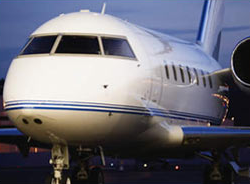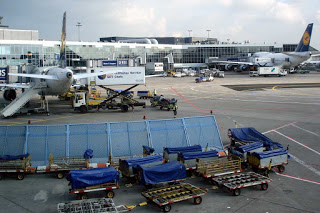Do You Have the Aviation Safety Manager Job?

If you have been a safety manager for years now, do you remember when you first started? So many questions, such as: Where do I start?
It can be frightening to be suddenly assigned as the safety manager when you know very little about what the "safety manager" does every day. And now you have been assigned to implement a safety management system (SMS)? "What did I get myself into?" you may ask yourself.
Employees of all positions are being assigned as the safety manager, often without direct operational experience. Yes, this happens commonly at many smaller operators every month. If this is you, don't be afraid. Naturally, there will be questions.
- What does an aviation safety management system look like?
- How do I manage this SMS?
- What tools do I need?
- What are the requirements?
If you are a new safety manager or an experienced safety manager starting a new SMS implementation, this is worth a read.
Related Articles on Aviation Safety Managers
- 5 Types of Aviation Safety Managers
- Career Advice for Aspiring Aviation Safety Managers
- How to Be a Better Aviation Safety Manager
What Do Aviation Safety Programs Look Like?
An aviation safety management system (SMS) is not a safety program. It is a system.
Come on, you have to be kidding me. To the layman, and many safety professionals, the SMS is a safety program. Yet some become very upset when you call their SMS a program. And if you keep doing it, these people become offended. You can call a dog a chicken, but it will still taste like a dog.
As the years go by, it becomes easier to say SMS, so if you are a new safety manager, get used to calling your safety program "the SMS." If you are talking to IT folks, they may think SMS is the "short message service" used for text messaging. Then it becomes the aviation SMS.
Now, what does this SMS look like?
Learn Aviation SMS Requirements

Before starting any project, the safety manager must first determine the requirements. Aviation SMS is not new, so there is considerable documentation. We recommend starting from the source of the aviation SMS requirement, namely the ICAO (International Civil Aviation Organization).
ICAO's famous Doc. 9859 is the Safety Management Manual (SMM) to begin learning SMS requirements.
I hear you saying, "Oh my God!, I have to read documentation from a government organization?" Don't worry, Doc 9859 is a fairly easy read. Print it out and read a few pages a day. You will be surprised at how easily it flows.
Other good sources for aviation SMS implementation guides include:
- FAA Documentation, namely Advisory Circular 120-92 B
- Transport Canada Safety Publications (difficult to find what you need)
- Civil Aviation Authority of Australia Safety Management
Australia's CAA puts out some very high-quality materials.
Don't be alarmed that you are reading documentation from different civil aviation authorities. They are all preaching the same sermon, which is based on ICAO's guidelines. ICAO's guidelines revolve around the four pillars or components of an aviation SMS.
Related Articles on the Four Pillars of Aviation SMS
- What Are the 4 Pillars of SMS?
- Who Started Four Pillars of Safety Management in Aviation?
- Which of the Four Pillars of SMS Carries the Most Weight?
The Aviation SMS Implementation Plan
How do you eat an elephant? "One bite at a time!"
SMS implementations are best viewed in smaller bite-sized chunks. The ICAO SMS implementation plan will have four phases:
- Planning SMS Implementation;
- Reactive Safety Management Processes;
- Proactive and Predictive Safety Management Processes; and
- Operational Safety Assurance.
To properly get from point "A" (Phase 1) to point "B" (Phase 4), the smartest safety managers will follow a tried and tested strategy or map. This map will guide you as to the rough or general requirements of the SMS implementation. Therefore, the place to start your safety program is to follow the SMS implementation plan! Keep it simple.
Planning SMS Implementation

Planning SMS implementation is the first phase of starting the aviation SMS. There are seven activities in the ICAO's implementation plan's Phase 1, but I recommend that you focus on the first three as you start your SMS implementation. Remember, we are not discussing the entire SMS implementation plan, but only the first steps to get you started.
- Identify the Accountable Executive and managers' safety accountabilities;
- Identify the person (or planning group) within your organization responsible for SMS implementation; and
- Conducting the gap analysis.
You may say, "Wait, this is too basic. I want more meat to this because I'm a fast learner." Or, you may believe you are in Phase 2 or Phase 3 already and just want a quick refresher. This is fine; I have more for you "over-achievers."
If you think your SMS is already beyond those first three activities listed above, you are ready for a self-assessment. You can start at whichever SMS phase you believe you are in. Be honest with yourself when you take these assessments. They will help you identify where you truly are with your SMS implementation.
Related Articles on SMS Implementation
- Why Should We Implement Aviation SMS?
- How to Create Aviation SMS Implementation Plan - With Templates
- Is Your Aviation SMS Implementation a Farce? - With Self Assessments
Identify the Accountable Executive of the SMS
This is an easy task. For new safety managers, this activity has already been performed for you, especially in countries that have been implementing SMS for several years. The accountable executive is responsible for the SMS implementation and for ensuring the SMS is working in all areas of the company. As a safety manager, you will be preparing SMS performance monitoring reports and interfacing directly with the accountable executive.
The accountable executive has the final word on all safety matters. Furthermore, the accountable executive controls the SMS budget and human resources. This is a requirement for all account executives, so there can be no shifting responsibility for safety departments lacking the necessary resources.
After guaranteeing the support of the accountable executive, the next question you should be asking is, "Do we have senior management commitment?"
If your senior management does not commit fully and explicitly to the SMS, your SMS will fail. Plain and simple!
Determining Top Management Commitment to Safety Program
How can I tell if top management and the accountable executive (AE) are seriously committed to the SMS?
Most managers will tell you, "Safety is our top priority," but these are often hollow words. Indicators of the lack of SMS support may be:
- No written safety policy signed by the president or CEO (accountable executive);
- No commitment to a safety budget (or severely restricted safety budget);
- Unwillingness or reluctance to contribute to safety meetings (AE and Dept Heads);
- AE reluctant to meet regularly (weekly is best) with the safety manager; and/or
- Lack of regular safety messages to the organization (newsletters, memos, video broadcasts).
If you don't have top management support, your first job as a safety manager is to get it. This will be another topic for another day.
Identify Persons Responsible for the Safety Program
This is also easy. It is you! You have been assigned the job of the safety manager, either solely or as part of the safety team. For smaller organizations with fewer than 100 employees, there is typically only one safety manager. We recommend an alternate in case the safety manager goes on vacation or departs unexpectedly from the organization.
Related Articles on Aviation Safety Managers
- Why Aviation Safety Managers Fail Without Dept Head Support in SMS
- Why/When Aviation Safety Managers Don't Need Operational Experience
- How to Reduce Risk to SMS When Aviation Safety Managers Quit
Conducting the SMS Gap Analysis

The SMS gap analysis is your detailed map of the requirements of the aviation SMS.
The gap analysis is an internal audit/evaluation/assessment of your organization as to:
- What you have;
- What you don't have; and
- Where do we want to go?
Very simple, yes? While an SMS implementation plan is generic and ICAO's SMS implementation plan is perhaps the best, there are many strong differences in aviation SMS gap analysis models.
For example, the most common are:
- ICAO (three different versions);
- FAA preliminary;
- FAA detailed;
- FAA Part 5;
- IS-BAO (very limited and not useful); and
- Transport Canada.
Most use the ICAO gap analysis, but if you are Canadian, then you should use Transport Canada's gap analysis checklist.
I just said the magic word: "Checklist." That is what you need when you perform your gap analysis. All of these checklists are available in an MS Excel spreadsheet.
There are more sophisticated tools that
- track and document gap analysis history,
- submit shortcomings as issues to be worked on as a team, and
- generate reports.
But you really don't need these bells and whistles to get started, but they are very helpful.
Some very good aviation SMS databases make this task easier. The disadvantage is that they are not free. The advantage is that they automate tasks that can become overwhelming for a part-time safety manager, or a safety manager who needs collaboration tools to make sure that identified shortcomings do not fall through the cracks.
SMS database software is a godsend when managing SMS. For organizations with more than 40 employees, you need an SMS database because SMS documentation requirements become too burdensome to manage effectively using spreadsheets and single-point solutions.
Your SMS will fail without proper safety data management strategies. When you look for SMS data management tools, get an SMS database that includes an SMS manual template. This reduces your risk considerably and is a great bonus when you don't have an SMS manual.
The advantage of acquiring an SMS database with an SMS manual is that the SMS database's processes will be integrated into the SMS manual template. Make sure you verify this with your SMS database provider, as I can only speak to one product (SMS Pro).
Related Aviation SMS Database Articles
- What Is an Aviation Safety Database
- How to Choose the Best Aviation Safety Database Software
- 5 Most Important Things to Know Before Buying Aviation SMS Database
Final Words on Starting Aviation Safety Programs
I have worked with hundreds of companies on implementing their SMS. Most failures stem from a lack of top management support and not having the proper tools. An example that is famous in the United States is the FAA's funded WBAT program. WBAT has been destroying safety cultures ever since it came out.
Even after more than a dozen years, I have never heard anyone speak well of this program. It is a failure as far as promoting safety. When aviation employees around the entire United States badmouth a program, I would think that the FAA would respond and either:
- Cancel the program; or
- Fix the program.
WBAT is not the only safety software that users complain about. To be honest, I'm just using WBAT as a prime example of a software program that damages safety culture. This example has a lesson.
When you start an aviation SMS, you will need tools to manage the considerable amounts of data generated. Safety managers' jobs are impossibly difficult when relying on paper, MS Excel, MS Word, and a simple, homemade MS Access database. Do you think I'm joking?
You don't have to be "that guy" who suffers. Here is a low-cost, commercially available SMS database that manages ALL SMS requirements in a single SMS database. I'm not talking about a whole bunch of point solutions bolted together and a fancy name slapped on the resulting product. When I say a single database, that means one database to manage all SMS data.
There is less risk to the accountable executive when professionals manage your SMS data.
Below are some short videos to review to determine whether we are a good fit for you. SMS Pro is a market leader. We've been developing SMS databases since 2007. Look at our documentation on our website and compare it to the other solutions. Those other solutions don't show much because they are common point solutions cobbled together and packaged nicely and pretty. SMS Pro is not a point solution and it is not a "white-label" product that is being resold.
To determine how deep the subject matter expertise of your aviation SMS database provider is, look at the other industries your provider works in. Are they also dabbling in
- chemicals,
- oil and gas, or
- automotive industries?
When your aviation SMS database provider is trying to be everything to everybody, you can expect a mediocre product.
SMS Pro was built specifically to address "aviation SMS documentation requirements." It is a complete system, like SMS. Can you call SMS Pro a program? Go ahead, you won't offend me.
Live SMS Pro Demo
Find us a good fit?
Have some questions or do you want to see the SMS Pro in action? Sign up for a live demo.
Last updated August 2025.









